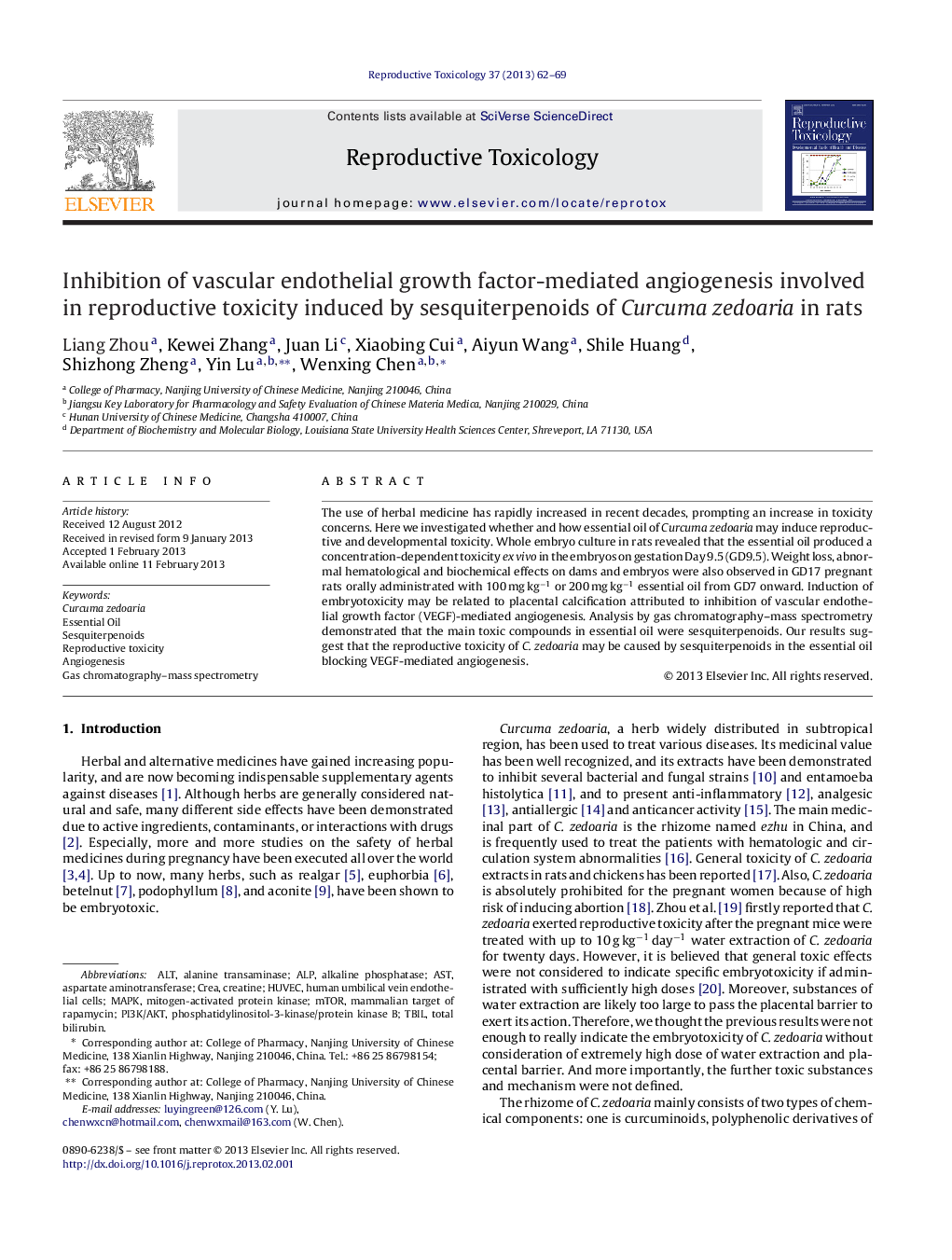| Article ID | Journal | Published Year | Pages | File Type |
|---|---|---|---|---|
| 2593777 | Reproductive Toxicology | 2013 | 8 Pages |
The use of herbal medicine has rapidly increased in recent decades, prompting an increase in toxicity concerns. Here we investigated whether and how essential oil of Curcuma zedoaria may induce reproductive and developmental toxicity. Whole embryo culture in rats revealed that the essential oil produced a concentration-dependent toxicity ex vivo in the embryos on gestation Day 9.5 (GD9.5). Weight loss, abnormal hematological and biochemical effects on dams and embryos were also observed in GD17 pregnant rats orally administrated with 100 mg kg−1 or 200 mg kg−1 essential oil from GD7 onward. Induction of embryotoxicity may be related to placental calcification attributed to inhibition of vascular endothelial growth factor (VEGF)-mediated angiogenesis. Analysis by gas chromatography–mass spectrometry demonstrated that the main toxic compounds in essential oil were sesquiterpenoids. Our results suggest that the reproductive toxicity of C. zedoaria may be caused by sesquiterpenoids in the essential oil blocking VEGF-mediated angiogenesis.
Graphical abstractFigure optionsDownload full-size imageDownload as PowerPoint slideHighlights► Essential oil of Curcuma zedoaria could induce embryotoxicity ex vivo and reproductive toxicity in vivo. ► Its reproductive toxicity is related with inhibition of VEGF-mediated placental angiogenesis. ► Sesquiterpenoids in essential oil are the main embryotoxic compounds.
